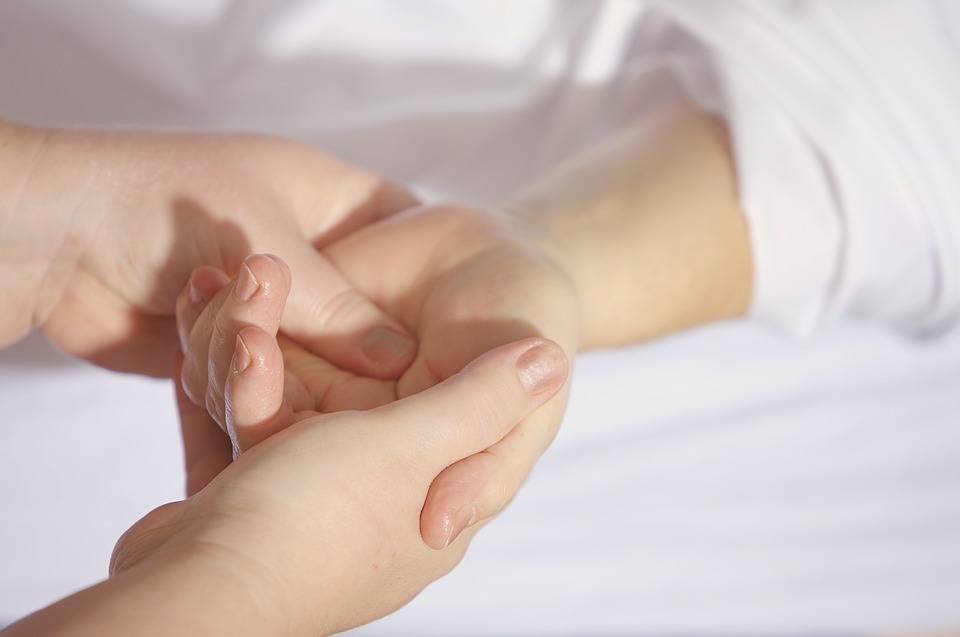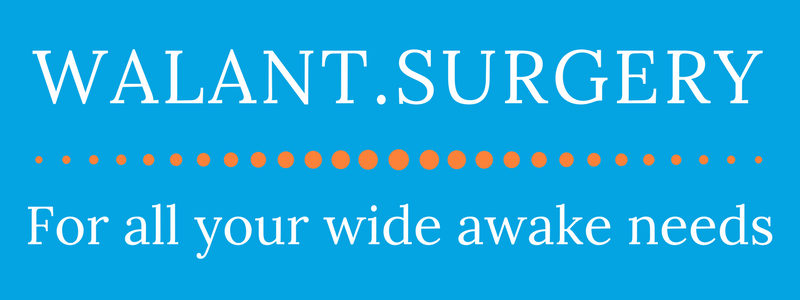
WALANT Surgery: A New Light for Hand Therapy
BY Jeanette Allison
STICK-TO-IT-IVE-NESS
-noun
dogged perseverance
the quality that allows someone to continue trying to do something even though it is difficult or unpleasant
Do you have a dogged perseverance for your profession? In the face of difficult or unpleasant circumstances, how do you generate stick-to-it-ive-ness?

More...
WALANT surgery can be an antidote to one’s waning grit.
WALANT means: Wide Awake Local Anesthesia No Tourniquet. This surgical approach appears to hold much promise for professionals and their patients.
What can WALANT surgery do for the field of hand therapy? Here, I reflect on how WALANT surgery shed new light on my determination to be a nationally-certified hand therapist.
One late night I could not sleep. Worried about my lost sense of enthusiasm, I skimmed through LinkedIn posts for inspiration. I found it: WALANT surgeries. I could not stop watching. Captivated by this discovery, I had to know more. At that moment, I knew my passion was back.
I unearthed something very amazing: A surgeon was asking the patient to move her hand while the surgeon made intra-operative adjustments. The patient and surgeon interacted during surgery. This wasn’t the usual dopey, applied tourniquet surgery. The patient was awake and providing feedback for the surgeon.
Walant and me!
I am not a surgeon. However that vivid night online I clearly envisioned hand surgeons and therapists networking, and potentially changing how hand therapists train. I certainly can learn from these surgeons. Together, we could be a dynamic team.
Everything about WALANT surgery inspires my efforts to understand drier aspects of my learning process. In my experience, the long-standing protocol for becoming a hand therapist is innately isolating if one isn’t in a large metropolitan city rich with hand connections. The final feat is passing a national exam based largely on memorising vast numbers of facts.
What if the certification process could be more immediately-dynamic and applied? Learning theorists and cognitive scientists have long shown that applied action, in multiple contexts, results in mastery learning (e.g., Bloom, B, 1968; Piaget, J, 1977; Gardner, H, 2006). Mastery is the highest learning level. In my hand therapist journey, I crave this approach. Why isn’t becoming a hand therapist more rich with applied learning and ongoing mentorship?


At this point, it’s a no-brainer that learning is most effective when coupled with a dynamic medium.
Online WALANT surgeries and reading surgeons’ discussions have kept me more engaged in my own certification process which requires a very high level of dedication.
If you haven’t joined the WALANT website, I encourage you to discover it now. The website WALANT.SURGERY was founded by Mr. Alistair Phillips, a hand surgeon and WALANT enthusiast from the UK, and Dr. Don Lalonde, a Canadian plastic reconstructive hand surgeon and the foremost advocate of WALANT in the world.
WALANT surgery helps patients play a role in their surgery. Surgeons can use patient feedback to adjust intra-operative plans if necessary. Patients see their hand throughout a bloodless surgery as the site is being reconstructed. Patients own the process.
Post-operatively, it goes without saying that involved patients would likely be more responsible with their recovery. Such an approach places patients first.
An important bonus for hand therapists is being able to ask WALANT surgeons questions, and receive timely answers. For example, I’ve dialogued with WALANT Drs. Alistair Phillips, Egemen Ayhan, Asif Ilyas, and Amir Adham Ahmad. Another WALANT surgeon, Dr Peter Rhee, generously offered to speak with me and allow me to observe his surgeries. Now that offer is invigorating!
I’m less isolated—and my reach goes beyond book learning and practice exams. I am connected to the source of change: Surgeons and their surgeries. A highlight of any day is communicating with surgeons and hand therapists. We are a global team for patients. International access to the founders of WALANT, and their successors, changed the trajectory of my learning path. I found a big boost I desperately needed. This new addition to this field has inspired me to continue striving for my career.
Reading interchanges between Dr. Alistair Phillips and his peers implementing WALANT provides insights books cannot offer. Witnessing exchanges between surgeons and patients also reveals the intricacies of hand anatomy like no other medium. Short of being in the operating room, online WALANT surgeries place me ‘right there.’ I get to see real, dynamic change from pathology to altered biomechanics. I feel privileged to watch from patients’ and surgeons’ perspectives.
The rich online conversations that follow WALANT surgical postings reignite my passion every time. The patient-surgeon exchanges help me formulate my plan of care. Facts begin to make more sense. I stay hooked. My knowledge becomes more seasoned for the patients I see the next day.
The mainstream learning approach to becoming a hand therapist lacks fundamental steam. It could use an overhaul. I can say this with a fair amount of expertise because I earned and practiced with a PhD in Education, certifying teachers.
Curriculum development and adult training encompassed large chunks of my former career.
All learners need the same thing: visual, multi-sensory inquiry. This is where WALANT comes in: It offers learners real-time contexts to understand simple and complex surgeries. Surgeons and prospective hand therapists communicate early on.
While I make my way towards becoming a certified hand therapist, I can say with certainty that dialoguing with surgeons about their WALANT surgeries is pivotal to my professional growth, personal confidence, applied learning, and stick-to-it-ive-ness.
Seeing WALANT surgeries is akin to looking inside a secret candy jar; or, as my title suggests: sheds new light on hand therapy. Having multiple glimpses into the sacred spaces of online WALANT surgeries continues to illuminate my trek to become the hand therapist patients hope to get.
I encourage WALANT surgeons to invite hand therapists as central players in surgical teams. Hand therapists, I urge you to reach out to WALANT surgeons to progress your dreams, increase collaboration, and enrich your career.
In this era of burn out and *moral injury amongst healthcare workers, surgeon-therapist alliances are imperative to deliver consistent, high-quality healthcare. WALANT surgery seems like a wonderful gateway for this much-needed partnership.
*Talbot, Simon G, & Dean, Wendy. “Physicians aren’t ‘burning out.’ They’re suffering from moral injury.” statnews.com, July 26, 2018; https://www.statnews.com/2018/07/26/physicians-not-burning-out-they-are-suffering-moral-injury/. Accessed November 22, 2018.
References
Bloom, Benjamin (1968). Learning for mastery: Instruction and curriculum. Washington, DC: Office of Education.
Gardner, Howard (2006). Multiple intelligences: New horizons. New York: Basic Books.
Piaget, Jean (1977). The role of action in the development of thinking. In Knowledge and development (pp 17-42). New York: Springer.
Enter your text here...
